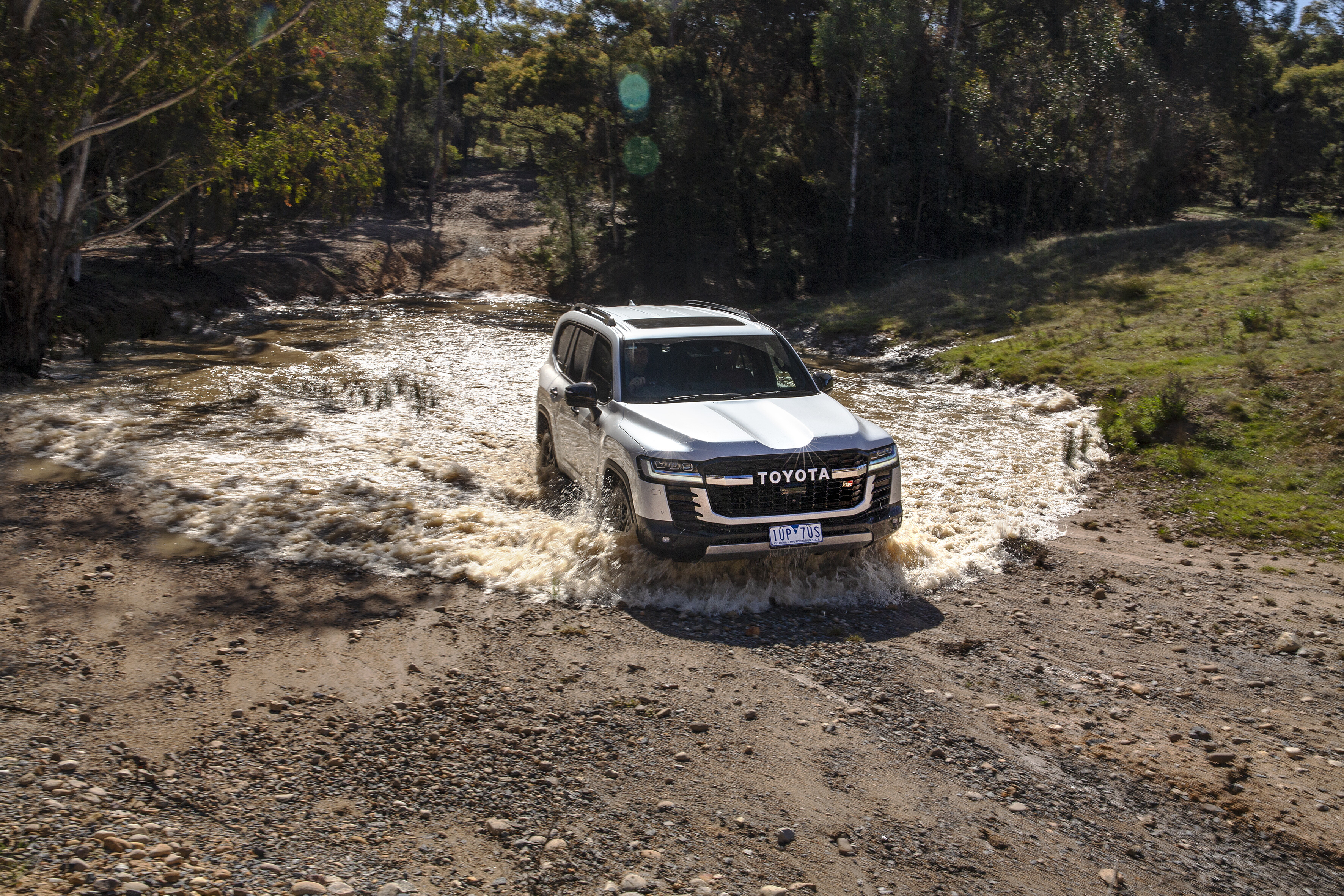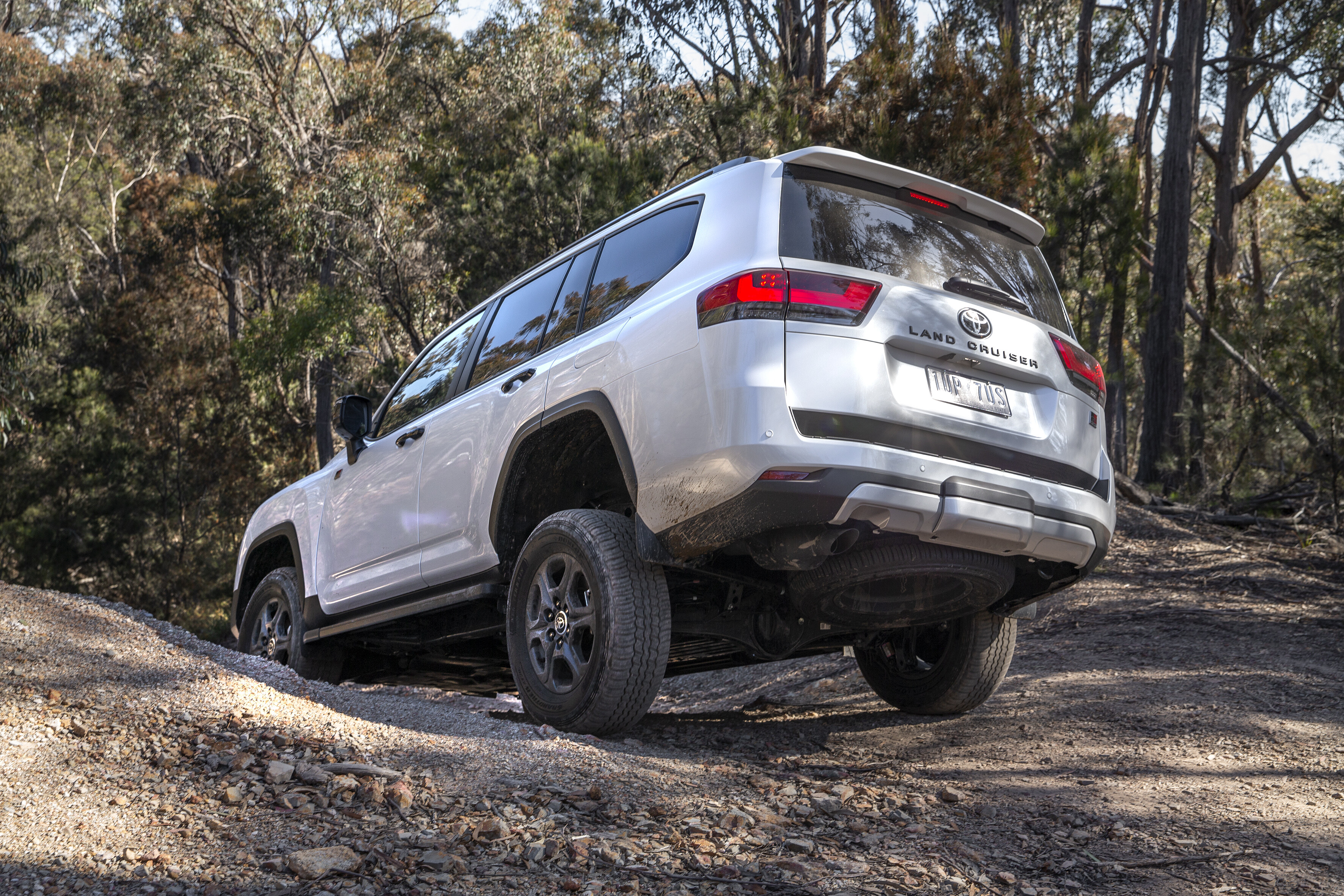Any suggestion Toyota’s new 3.3-litre V6 diesel in the 300 Series LandCruiser is 100 per cent new from the ground up is wrong. Yep, that’s right; it’s not an entirely new design.
This new V6 can be seen as the old V8 with two cylinders lopped off one end of the cast-iron block, and then topped with all-new (but still DOHC four-valve) cylinder heads, and more sophisticated fuel-delivery and turbo systems.
Now that may be a simplification, but the fact remains the 4.5-litre V8 and the 3.3-litre V6 both have 86mm cylinder-bore and 96mm piston-stroke dimensions, both have a cast-iron block, and both have their cylinder banks set 90-degrees apart.

The retention of the exact bore and stroke dimensions is somewhat unexpected given the bore-stroke ratio of passenger-car and light-commercial-vehicle diesel engines has been constantly evolving in the last 20 years as diesel technology has moved into new and uncharted territories.
The V6’s 90-degree vee angle is also unusual given V6s are almost all 60-degree designs, and for good reason. But more on that later.
All this is not to say that the new 3.3-litre V6 isn’t a great leap forward given it makes more power (227kW vs 200kW) and more torque (700Nm vs 650Nm) than the 4.5-litre V8, despite losing two cylinders and 25 per cent of its working capacity. It also gets by with a lower and less mechanically efficient compression ratio of 15.4:1 compared to the V8’s 16.8:1, which makes its increase in power and torque for each unit of engine capacity even more impressive.
The ‘little’ V6 has it over the ‘big’ V8 in both maximum power and maximum torque thanks largely to its sophisticated sequential-parallel twin-turbo system, which has more pumping volume than the V8’s relatively simple parallel twin-turbo system. In essence, the V6’s turbos work together and build on each other in terms of pumping volume, whereas the V8’s turbos work independently of each other and are more limited in what they can do as a result.

A new high-pressure (up to 40,000psi) common-rail fuel injection system, as well as the largely in-piston new-design combustion chambers, also play key roles in the jump in specific power (from 44.8 to 67.8kW/litre) and specific torque (146 to 209Nm/litre).
Unlike the V8 whose two turbos are mounted outside the cylinder banks, the V6’s turbos are mounted between the cylinder banks as the cylinder heads are turned around so their exhaust ports face in to the vee. This is what’s called a ‘hot V’ arrangement and it explains why the V6 retains the 90-degree vee angle.
Having the two cylinder banks angled farther apart (at a 50 per cent wider angle in fact) means more space for the two turbos that sit side-by-side, and more space in and around the turbos. So the ‘hot V’ can be a little less hot, which is what you want for long-term reliability.

There’s been some criticism of the ‘hot V’ concept as being unsuitable for Australia’s hot climate, but given the main market for the 300 is in the Middle East, one can only assume that Toyota would have had a long, hard think about hot-climate suitability. The 300 was also a very long time coming, with advanced prototypes being tested and in Australia as long along ago as 2015, so it has a good deal of development behind it.
The 90-degree vee angle does have a downside in as much as a V6’s inherent vibration is kept to a minimum when the cylinder banks are set at 60 degrees, and by widening up the angle to 90 degrees means the inherent vibration becomes more forceful. To counter this, a somewhat complex two-piece counter-rotating balance shaft driven off the crankshaft is employed.
All of which raises the question: Why didn’t Toyota make a straight six? Unlike a V6, a straight six is perfectly balanced (no need for a balance shaft) and it offers simplicity of turbocharging given the convenient placement (all in one line) of the exhaust ports. A straight six is also cheaper and simpler to make given it has less parts, all of which explains why manufacturers such as Mercedes-Benz (with its latest G-Wagen) and Land Rover/Range Rover have gone the straight-six way.





